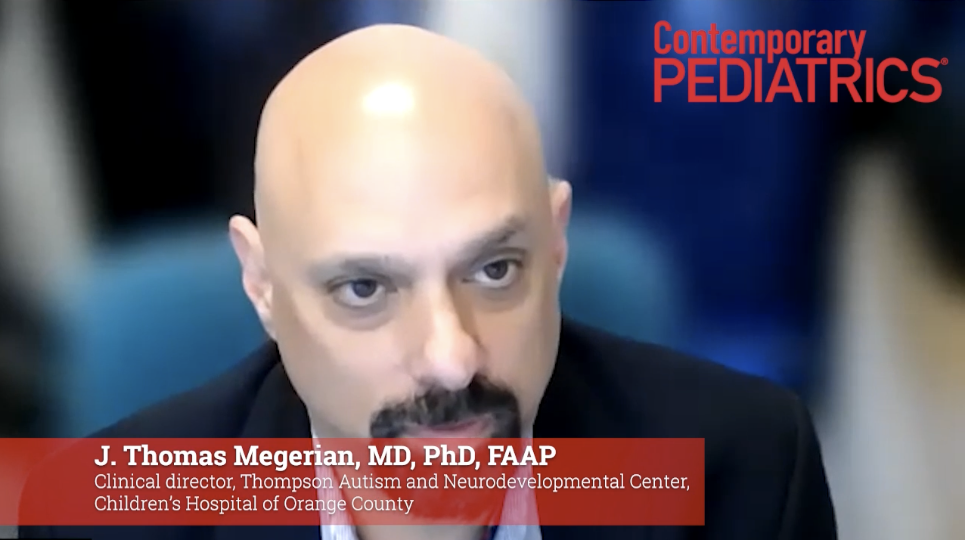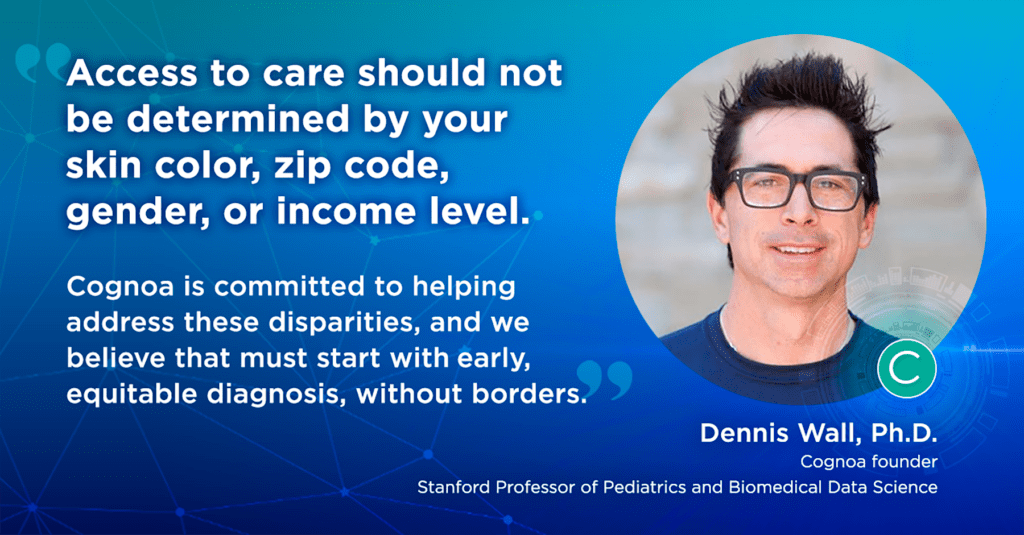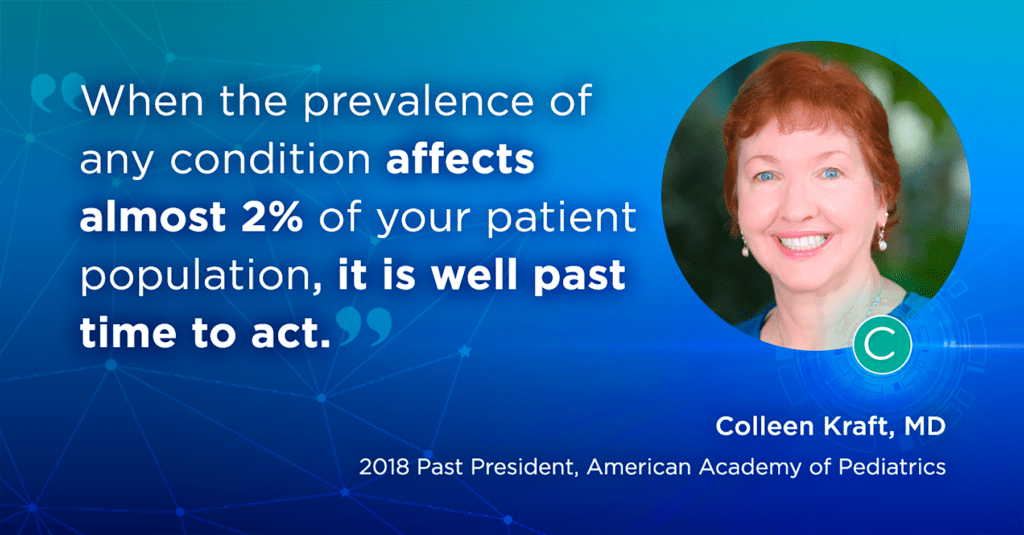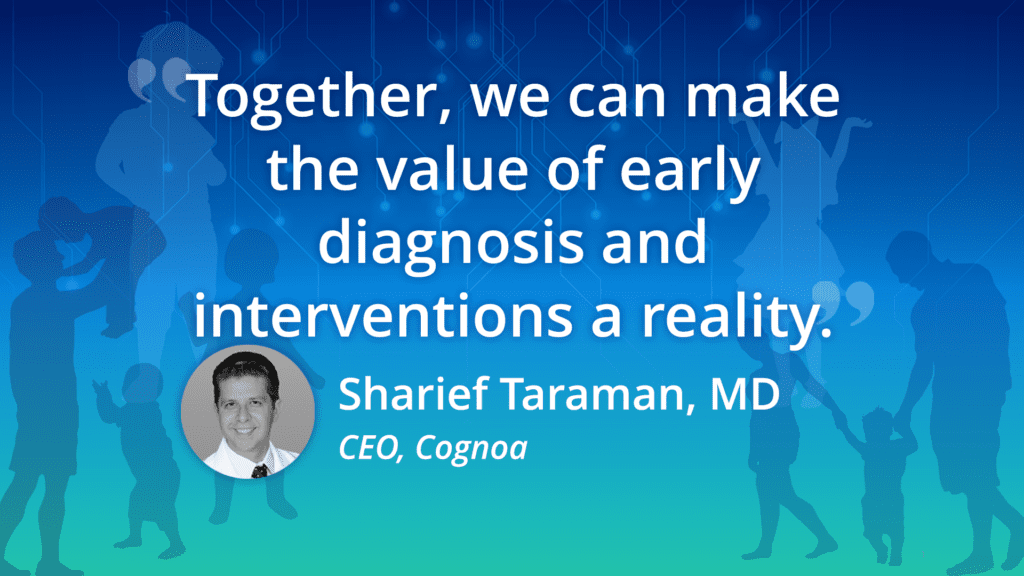Five Steps to Take When You Have Developmental Concerns About Your Child

When you have concerns that your child may have developmental delays, there is no time to wait. If your child is not showing the physical development or behavior you would expect for a child their age, speak up to a medical professional as soon as you have a concern. Trust your instincts. As a parent, you know your child best. When families have concerns about a child’s development, they are usually right—even if it is something a doctor has missed along the way. If you have concerns about your child’s development, here are 5 action steps you can take right away: Step 1. Schedule an appointment with your primary care physician or pediatrician. Be clear about the reason for the visit and mention the specific behavior(s) you are concerned about. Don’t be afraid to ask if there is somebody in the practice who might be more familiar with developmental delays. Step 2 Prepare for the appointment. Before you and your child meet with the physician, make sure to gather all the information and observations that you have, including writing down any specific concerns and noting where and when you are seeing specific difficulties in your child’s development. Also bring any videos or recordings that show the difficulties you have observed. Step 3 Start the conversation. When the physician asks why you are here today, begin by stating clearly what your concerns are. There is no need to wait for the doctor to discover them on their own. You can start by saying something like, “I have noticed some things that are really concerning me about my child’s _______.” Be very specific. For example: “I am concerned my child is already 2 and not speaking yet.” Step 4 Advocate for your child. Make sure your concerns are adequately addressed. You are the best advocate for your child and their needs. If you don’t think the physician is addressing your concerns or says “Let’s wait and see” without any other plan of action, you do not have to accept this. Request further evaluation from this doctor, or seek a second opinion from another primary care physician or pediatrician. You can ask the doctor’s office if there are primary care providers in the area who specialize in developmental concerns or request a referral to a specialist such as a developmental behavioral pediatrician, pediatric neurologist, child psychiatrist, or psychologist. In any case, keep advocating for your child until you get the answers you are looking for. Step 5 Work together on a plan with your physician. Early diagnosis and intervention can be life-changing for children with developmental delays. In addition to the private health care system, there are public resources available that might also be helpful. One of these resources is your local Early Intervention (EI) Center. If your child is under 3 years of age, you can reach out directly to the EI to get an evaluation for your child and you do not need a doctor’s referral. If your child is over 3, you can access this public system through the special education department in your local school system. You can access your state EI office at this link, and call to find your local EI office. If additional services are needed, your private insurance may cover other specialists and care. For more information on what actions to take when you have concerns about your child’s physical or mental development, click here for helpful resources from the Centers for Disease Control (CDC). Cognoa created Canvas Dx for families and doctors to be able to act early on developmental concerns. Canvas Dx is a remote, digital assessment for children at risk of developmental delay between ages 1.5 to 6 years old. Talk with your pediatrician about any developmental concerns that you have and ask them about Canvas Dx. Remember, throughout this journey, you know your child the best, and while it might take some effort, there are steps you can take to find experts who are ready and able to help. Kelly Wilson is a Parent Advocate for families of children with autism, and is the father of a child with autism himself. Kelly is also a medical writer and member of the American Medical Writers Association.
When It Comes to Early Developmental Signs, Trust Your Gut

When it comes to your child’s development, early signs of possible developmental delays are important to watch for and act upon. A developmental milestone is a certain skill or behavior that most children are likely to develop by a certain age. For example, most children typically develop skills such as understanding others, talking, moving their bodies, and moving their hands at predictable times in their lives. A developmental concern is when you suspect that your child is not exhibiting a skill that you would expect them to be doing at their age. Here are some examples of typical developmental concerns that you may notice in your child. If you observe any of these concerns, let your primary care physician or pediatrician know as soon as you can. These may be signs of a developmental delay, and early intervention may be needed : Physical developmental concerns Not sitting without support by 9 months Not pulling themselves up to stand by 14 months Not walking by 18 months Speech Trouble talking or understanding others No babbling, pointing or other gestures by 12 months No single words by 16 months No two-word phrases by 24 months Behavior Behavioral differences from other children (difficult to calm, screeching instead of babbling) at 9-12 months of age Poor or intermittent eye contact, especially with people with whom they are familiar Overall ANY loss of skills that had already been gained at any age If you want to know more about developmental milestones, the American Academy of Pediatrics has developed a comprehensive list of milestones that you can use to track your child’s development: Developmental Milestones: Ages 2 Months to 5 Years If you have a concern about your child’s development—even one that is not on this list—it is important to trust your gut. As a parent, you know your child best. When it comes to developmental concerns, previous research shows that parents are most often right when they have a concern. If you feel like something was missed along the way, it is essential to keep advocating for your child with your physician to make sure they receive the care that they need. Cognoa created Canvas Dx for families and doctors to be able to act early on developmental concerns. Canvas Dx is a remote, digital assessment for children at risk of developmental delay between ages 1.5 to 6 years old. Talk with your pediatrician about any developmental concerns that you have and ask them about Canvas Dx. Kelly Wilson is a Parent Advocate for families of children with autism, and is the father of a child with autism himself. Kelly is also a medical writer and member of the American Medical Writers Association.
Why act early? In childhood developmental delay, the earlier the better

Carly’s story: “When my son Matty was just over a year old, we started noticing that he was a little different than some other kids at that age. He wasn’t moving around the house a lot—he would usually just sit close to us, wherever we sat him down. He would crawl a little, but didn’t try to pull himself up yet. “He was also very quiet. We knew other families whose kids were saying their first words by now, but Matty would sometimes just look at us with those beautiful blue eyes, as if he was trying to understand what was going on. When he did want something, he would just cry out, making a screech that sounded more like a bird than like baby talk. We kind of laughed about it at first–‘Matty-bird wants something,’ we’d say. But it was really concerning. “The pediatrician told us just to be patient. She said that Matty was just a ‘late bloomer,’ and reminded us that every kid develops at their own pace. But we worried that something else might be going on—that we had missed something along the way.” In my work as a developmental pediatrician, I have heard dozens of stories like Carly’s and Matty’s. They are starting to notice signs that might mean developmental delay for their child, but they and their pediatrician or family doctor have taken a “wait and see” approach, hoping that the child’s development will catch up with their age sometime soon. However, just waiting may be missing an important opportunity to make a life-changing intervention in your child’s life. The importance of acting early Your child’s brain grows most rapidly during his or her early years, particularly before 3 years of age. This is the time when any kind of intervention for developmental delay is going to be the most effective, when the brain is still in this formative stage. Most parents of children with developmental delay, such as autism, start to have concerns just after the child is a year old. The average age for initial patient concern is 14 years of age, and clinical data has shown that when parents suspect their child has a developmental delay, they are right 90% of the time. That is why if your child is showing any signs of developmental delay in their physical activity, their voice and speech, or their behavior, the time to act is now, during this window when the brain is still forming. If your primary care provider does not share the concern, it is worth it to press them to evaluate your child or seek a second opinion. There is no time to wait to have an early intervention. It may change your child’s life. Early Intervention (EI) can make lasting changes Children with developmental delays may need help learning things like talking, listening, knowing how to play with other kids, or how to deal with stress and change. An Early Intervention program can provide speech therapy, physical therapy, and other services based on the child’s need. Early intervention programs provide services and support to children with developmental delays and their families. You can call them if your child is 0-3 years old and you are concerned about your child’s development. Early Intervention programs are available in every state and territory. The programs are publicly funded, so they offer services for free or at an affordable cost for eligible families. These programs can significantly impact the child’s ability to function, to learn, and to interact with others—skills that will help them throughout their life. You know your child better than anyone. If you see the signs of developmental delay, early intervention can give your child the tools and support they need to grow and be the best they can be. Colleen Kraft is a primary care pediatrician and 2018 Past President, American Academy of Pediatrics.
How Primary Care, Payers, and AI Can Activate Early Intervention in Autism

In a video developed in partnership with the journal Contemporary Pediatrics, leading neurodevelopmental expert, Dr. Tom Megerian, underscores the urgent imperatives to address early traits of autism and developmental delay before they begin to manifest further as fully-fledged conditions that negatively impact patient lives. Dr. Megerian, who is Clinical Director at the Thompson Center for Autism & Neurodevelopment and who heads up the Division of Neurodevelopmental Medicine at CHOC Children’s (Children’s Health of Orange County), lists the key actions that are needed to make earlier diagnoses: Early intervention is the single most important intervention for children at risk of developmental delay and autism Putting diagnosis in the hands of primary care providers with the help of mobile digital health and AI solutions, including Canvas Dx, will help with early diagnosis and intervention Healthcare payers have a responsibility to cover and reimburse diagnoses within primary care, as well as covering referrals for early interventions based on those diagnoses to speed access to life-changing therapies “Starting as early as possible is the number one improvement we can make in society to help kids maximize whatever potential they have,” Megerian says. “I think putting diagnosis in the hands of primary care pediatricians and not having to have them refer to tertiary care centers for everybody is probably the number one thing we can do.” “We need to address the insurance issues,” he continues. “[And make] sure that pediatricians are entitled and able to make a diagnosis and have payers cover both the diagnosis that pediatricians do and also approve referrals for therapies based on those diagnosis. We see a lot of pushback, where payers will tell a pediatrician, no, you need to send this child for a further evaluation, or you need to do one of these very specified tests to make a diagnosis.” Cognoa extends many thanks to Dr Megerian and to Johsua Fitch, editor of Contemporary Pediatrics, for their advocacy and for weighing in on these important issues around autism and early diagnosis. Watch the full video: https://www.contemporarypediatrics.com/view/rise-in-autism-prevalence-highlights-continued-need-for-early-intervention
Waitlist Crisis Report

The State of Pediatric Autism Diagnosis in the U.S.: Gridlocks, Inequities and Missed Opportunities Persist A new analysis of specialty centers across the U.S. confirms that families concerned about their child’s development and behavioral health face unacceptably long wait times, unnecessarily complex and highly variable processes, and reimbursement barriers and inequities – all adding up to delayed diagnosis and missed opportunities for life-changing early intervention for children. An analysis of 111 specialty centers in the U.S. confirms the crisis of care for children and families seeking a diagnosis of developmental delays and autism evaluation. The delays in diagnosis revealed by this survey demonstrate why many children with autism, and other developmental/behavioral conditions, are missing a critical early intervention period when significant, positive impacts on neurological development can be made. This report of the survey’s key findings sheds light on the inequities and inefficiencies in the system that are leaving many children and families behind. The survey was designed and conducted by Scott Badesch, Former President of the Autism Society of America, and sponsored by Cognoa. Multiple factors cause delays The analysis uncovers several issues with the current processes for autism diagnosis, including: Unacceptably long wait times for evaluations Specialist shortages Lengthy, labor and time intensive evaluations that are unnecessary for many children Heavy documentation burden for healthcare providers No standard of care for diagnostic processes Disparities in access due to limited and variable reimbursement and coverage Families wait months or more for answers Wait times for autism diagnosis are unacceptably long for many children across the U.S. Nearly two-thirds of specialty centers that conduct autism evaluations (61%) had wait times longer than 4 months. Of that group, 25% reported waitlists of more than half a year. 21% reported waitlists of more than a year or had waitlists that were so full that they were no longer taking new referrals. “Imagine your child is showing signs of autism, and imagine you are told your child cannot be diagnosed nor access therapies that would help your child for at least two years,” said Scott Badesch, Former President of the Autism Society of America. “Families of minority backgrounds, low income, and/or in rural areas often don’t have any opportunities for early diagnosis and services. A person who suspects he or she has cancer, can and should get diagnosed within days. But if your child shows signs of autism, the wait time is months to years. This is not acceptable.” A recent poll at the Society for Developmental & Behavioral Pediatrics Annual Meeting in September 2023 showed even longer wait lists. More than half of the audience of developmental behavioral pediatricians of academic or hospital affiliated centers self-reported waitlists of longer than 9 months. Not enough specialists for the number of children in need The volume of children needing evaluation exceeds the limited number of specialists who complete them. More than two-thirds of centers (69%) report shortages in their workforce. 61% percent of centers also report that volume of children referred to them is a barrier to making evaluations in a reasonable time frame. * AAP** 20% of CAPs are above age 70*** AACAP “We also take over one thousand calls from the community every year, and the most common request is for autism assessments.” – survey respondent “Primary care clinicians, specifically pediatricians, who are equipped with a diagnostic that is made for their setting can accurately and rapidly evaluate, diagnose, and manage most children with developmental delays and autism – all from within the medical home,” said Dr. Sharief Taraman, CEO of Cognoa, Past President of the American Academy of Pediatrics-Orange County Chapter and Board Member of the American Academy of Pediatrics-California, Associate Professor University of California-Irvine School of Medicine. “Yet, in most cases, the forces that be, be it tradition or policy, make the ‘autism specialist’ the only option for a diagnosis. This isn’t working for families, specialists, nor primary care clinicians. This is an imbalance that healthcare leaders and policymakers must take seriously when directing future resources and developing initiatives to standardize, equitize, and streamline evaluation processes for families, irrespective of insurance type. We as a nation are failing our children. It is vital that we expand and empower the pool of providers who can evaluate and diagnose children, and we need to start in primary care.” “It is vital that we expand and empower the pool of providers who can evaluate and diagnose children, and we need to start with primary care providers.” – Sharief Taraman, CEO of Cognoa The urgent need to engage the broader primary care workforce in the process of autism diagnosis is also recognized by the leadership of the American Academy of Pediatrics. Amongst AAP’s most recent top leadership resolutions is their commitment to take action to ensure a diagnosis of autism by pediatricians “allows the coverage of appropriate services by both private insurers and state Medicaid programs.” Unnecessarily complicated & time-consuming processes Another obstacle that limits access to a timely diagnosis is the lengthy evaluations that are routinely given irrespective of the complexity of their presentation. Multidisciplinary team assessments have created barriers because they are time-intensive, specialist dependent, hard to access, and expensive. In more than 4 out of 5 centers (83%), evaluations take more than three hours. One of every four specialty centers report that their evaluations can take 8 hours. “Wait times, prolonged report writing time, and efficiency in the intake process are all real challenges in the diagnosis of children and adults with autism,” said another clinician in the survey. “A number of these challenges are perpetuated by professionals who continue to provide extensive evaluations that often duplicate those that have been completed within the school system and early intervention programs.” Another clinician pointed out that the documentation requirements of autism assessment is a barrier for families: “The ability to complete all the documentation varies from family to family, and depends on their ability to complete forms, respond to calls, provide transportation, and be flexible with scheduling. Unfortunately, many families are not able to complete all the items needed.” Barriers to reimbursement shut out the already disadvantaged “Insurance companies create barriers to diagnosing
Experts Weigh in on the Potential Benefits of AI in Clinical Practice

As healthcare moves towards an era of intelligent tech, pediatricians will increasingly have the opportunity to utilize tools powered by AI. These AI technologies can improve and expand diagnostic and treatment delivery in pediatric developmental health, in ways that overcome disparities and barriers to care. AI experts from Cognoa teamed up with other innovators in the field to develop an article, published in the Journal of Developmental Behavioral Pediatrics, which provides an overview of the history and underlying mechanisms of AI, the potential benefits for providers, and the work still to be done in the world of AI diagnostics. The article, “An Introduction to Artificial Intelligence in Developmental and Behavioral Pediatrics,” gives some promising views into the ways that AI can help overcome barriers to early diagnosis and treatment in children with autism and other suspected developmental delays. The AI Age is Here While AI was once found mainly in theoretical papers or speculative fiction, the authors of this AI overview point out that AI has fully arrived in our everyday lives and in clinical practices, noting that “While pediatricians may have limited familiarity with AI in a health care context, they are likely already making use of AI-powered technologies in their daily lives. Email spam filters, e-commerce platforms, and entertainment recommendation systems, for example, all rely on AI.” In an era when “Big Data” is being utilized as a way to help define populations and diagnose individuals, the authors discuss how AI can help clinicians in using the available technology to aid in their practice, saying, “Massive and constantly expanding quantities of medical data including electronic medical records (EMRs), high-resolution medical images, public health data sets, genomics, and wearables have exceeded the limits of human analysis. AI offers opportunities to harness and derive clinically meaningful insights from this ever-growing volume of health care data in ways that traditional analytic techniques cannot.” “Within the health care context, AI is not envisioned as a technology that would supersede the need for skilled human clinicians,” the authors add. “Rather, AI-based technologies will likely play pivotal roles in augmenting existing diagnostic and therapeutic toolkits to improve outcomes.” AI Can Make Practices More Efficient One major potential benefit that AI offers clinical practices is in efficiency, as the technology helps to reduce paperwork, streamline workflows, and shorten the time to definitive diagnosis. This improved efficiency can benefit clinicians and patients in a number of ways. “Artificial intelligence algorithms have potential to automate many arduous administrative tasks, thereby streamlining care pathways and freeing clinicians to spend more time with patients,” the article states. This overall refinement of the diagnostic process not only means that diagnosis happens sooner, but treatment delivery happens sooner, as well—which, in some conditions, can be life-changing. The article uses the example of autism, observing that AI can “develop an autism comorbid risk score with a superior predictive performance than some questionnaire-based screening tools.” The authors go on to note that “Such research is promising given that streamlining diagnosis could allow for earlier treatment initiation during the critical neurodevelopmental window.” AI Can Improve Access to Care Another focus of the article is how AI can help improve access to care by removing certain barriers along the way. One way that AI can make the diagnostic process more accessible is by reducing the need for text-heavy, questionnaire-based, in-person tools of the past. “Artificial intelligence has potential to address several bias and access disparities apparent in existing care models,” the authors write. “While access to developmental and behavioral specialists is extremely limited in much of the world, it is estimated that over 50% of the global population has access to a smartphone. Digital AI–based diagnostic and treatment platforms could thus potentially expand access to underserved and geographically remote populations. “Thoughtful use of AI may also help to address racial, socioeconomic, and gender biases,” the article continues. “In the field of developmental and behavioral pediatrics, for example, it has been noted that despite autism prevalence rates being roughly equal across racial/ethnic and socioeconomic groups, human clinicians are more likely to diagnose Black, Latinx, and Asian children, as well as children from low-income families, at a later date than White children and children with a higher socioeconomic status. By integrating and training on large racial-conscious and gender-conscious data sets, AI algorithms can assess thousands of traits and features and build on the findings to assist clinicians in making more accurate, timely, and less biased autism diagnoses.” AI Is Here to Stay—And to Help This is an exciting time in the care of autism and other areas. AI has arrived in clinical practices, and is defining a new era of care. As the authors of the article state, “Artificial intelligence (AI) in health care is not just a futuristic premise, and adoption has shifted from the ‘early adopter’ fringe to a mainstream concept.” Although the use of AI in clinical practices is relatively new, it is growing in availability and acceptance. There are many ways in which AI can improve processes and care in clinical practice—benefits which can ultimately improve outcomes. As the article states, “We are optimistic about the future of AI in health care, including developmental and behavioral pediatrics. By enhancing the efficiency and impact of health care processes, AI approaches promise to reduce barriers to care and maximize the time clinicians are able to spend with their patients.” Read the full article at: https://journals.lww.com/
Study Finds Large Disparities in Access to Autism Services by Race, Ethnicity, and Geography

Dr. Dennis Wall, Cognoa’s founder and Stanford Professor of Pediatrics and Biomedical Data Science, continues to advocate for equitable, early access to care for all children with neurodevelopment conditions and developmental delay, including autism. Dr. Wall was a senior researcher in a recent study in JAMA (Journal of the American Medical Association) that examined disparities in autism resources available to different racial and ethnic groups across different geographic regions in the U.S. The study showed that there are large gaps in access to diagnostic and treatment services by children with autism and their families, with up to 66% fewer services available to Hispanic and Black children compared to White children. (See JAMA article at https://jamanetwork.com/journals/jamanetworkopen/fullarticle/2800709). The study also identified geographic areas in the U.S. where families of non-White children have disproportionately lower access to services. Autism Resources and Top 10 Underresourced Areas in the United States Source: JAMA In a recent article in U.S. News & World Report that summarized the study, Dr. Wall discussed these findings, saying “Access to care should not be determined by skin color, zip code, gender, or income level. Cognoa is committed to helping address these disparities, and we believe that must start with early, equitable diagnosis without borders.” With the development of CanvasDX, Cognoa continues to live out its imperative to provide early, accurate, and accessible diagnosis of autism. Read full article in U.S. News & World Report: https://jamanetwork.com/journals/jamanetworkopen/fullarticle/2800709
If Primary Care Evolved for Asthma, It Can Evolve for Autism

The gap in care for children living with autism is very similar to the one that existed for children with asthma over 20 years ago. It was once assumed asthma could only be managed in specialty care. With changes in policy and clinical practice, diagnosis and management of asthma moved to primary care, where today it is routinely diagnosed and treated. Similarly, tools designed to integrate early autism diagnosis and management into primary care practices are urgently needed. This is why we built CanvasDx. Today’s primary care has evolved from years past. Today’s approach to comprehensive and high quality primary care is to establish “a medical home,” an approach which places the family at the center of the child’s care, partnering effectively with clinical specialists and community resources. Endorsed by the American Academy of Pediatrics (AAP), the medical home approach improves accessibility, continuity of care, and other aspects of care and treatment of children and families. With long wait times for specialist evaluations, pediatricians are increasingly being asked to play a greater role in identifying, diagnosing, and managing autism within the medical home. Read more about the parallels of the evolution of asthma care with that of autism in primary care in this commentary I co-authored with Dr. Brandon S. Aylward, PhD, healthcare researcher and innovator and clinical psychiatrist Christopher Chamanadjian which is published in the journal Clinical Pediatrics: https://lnkd.in/e4eGmHiA (access required) Colleen Kraft is a primary care pediatrician and 2018 Past President, American Academy of Pediatrics.
A new year, a new path forward

Dear Cognoa Friends, Family & Colleagues, It has been a busy 2022 for us at Cognoa. As we continue to grow our reach, we are seeing the tides change in the collective readiness and ability to improve the path to diagnosis for children with developmental delay. We are in the midst of preparing for U.S. commercialization of our first FDA authorized product, Canvas Dx. We are working thoughtfully and strategically to ensure healthcare providers can prescribe Canvas Dx, equitably and fairly. This involves creating partnerships, funding, and new reimbursement pathways so that providers can act on early developmental concerns and make the early diagnosis of autism more accessible to children and families. As we returned to in-person medical conferences, each had sessions about the need to improve how we evaluate and treat developmental concern and autism as soon as those concerns arise. At the AAP’s national conference, we presented new cost savings research that shows all-cause medical costs are double for children with autism who experience a longer time to diagnosis compared with a shorter time to diagnosis. With Canvas Dx, we finally have a way to support diagnosis in primary care and begin to address long-standing disparities—rather than just talking about them. My specialist colleagues, too, who live the waitlists and are “burning out”, express the need for a new approach, one that allows them to better focus on the children who need them the most. During this year, we updated the thresholds of the algorithm underlying Canvas Dx, and presented a new analysis of its performance at the AACAP’s national conference. The updated algorithm supports providers to accurately diagnose, or rule out autism, in more children even better than before. We started generating real world evidence to support adoption, use, and coverage. In collaboration with University of Missouri (MU) ECHO Autism Communities Research Team, we are well underway with a study looking at how Canvas Dx can be integrated into a primary care workflow to help streamline the path to care. Having served as Chief Medical Officer of Cognoa for several years, I was honored to become CEO of Cognoa in 2022. I am excited to lead the company’s progress with a foundation of my pediatric clinical background and healthtech innovation research, development, and practice experience. As we near key adoption milestones in 2023, we are committed to continuing to provide the best possible technology and support to children, families, and the healthcare community, and to propel our vision of a world where every individual has the opportunity to reach their full potential. Over the next years, we see compelling opportunities to further the indications of our diagnostic AI platform and take next steps in development of our first breakthrough digital therapeutic product. Together, we can make the value of early diagnosis and interventions a reality. On behalf of the entire Cognoa team, I want to thank you for your support and continued engagement in our progress. Wishing you and yours a happy holiday season, and a healthy, prosperous year ahead, Sharief Taraman, MD, DABPN, DABPM, FAAP CEO, Cognoa Sharief Taraman is CEO of Cognoa and is Diplomate of the American Board of Psychiatry and Neurology in Neurology with Special Qualifications in Child Neurology, Clinical Informatics Diplomate of the American Board of Preventive Medicine, Fellow of the American Academy of Pediatrics
Autism Diagnosis is Changing at the Speed of Data

The future of healthcare is in the data. There is tremendous use for data and AI in many facets of healthcare, and one area in which the latest data technology is creating improvements is in the diagnosis of developmental health in early childhood. Historically, diagnosing developmental delay such as autism has been a complex, time-consuming process, sometimes taking months or even years without a definitive answer. Cognoa’s Canvas Dx, the first FDA authorized diagnostic device for autism, helps healthcare providers to diagnose or rule out autism in young children. Using AI to analyze a large volume of data from multiple sources in real time, Canvas Dx can shorten the time to diagnosis by potentially up to a year and a half earlier than today’s average. Canvas Dx also provides improved access to autism diagnosis, which can help facilitate life-changing early interventions for children with developmental delay. This one-of-a-kind diagnostic can also help rule out autism, which can clear the way for other interventions. Powering the AI behind Canvas Dx is a platform called Lakehouse, developed by data technology pioneers Databricks. “With the help of Databricks Lakehouse, this critical data, analytics and AI can potentially shorten the time to diagnosis for many children,” said Valerie Jenkins, Head of Communications at Cognoa. “We take in huge amounts of unstructured and structured data, standardize it, and run machine learning models that help inform a provider’s diagnosis.” Watch this video about how Cognoa uses Databricks Lakehouse within our underlying CanvasDx data science processes: You can also read more about how Canvas Dx utilizes the Databricks Lakehouse platform in this case study: https://www.databricks.com/customers/cognoa “Cognoa is not only a pediatric behavioral health company — we’re a data and AI company. We want to improve how behavioral health conditions are diagnosed and treated, and, with the help of Databricks Lakehouse, we’re just getting started,” concluded Jenkins.